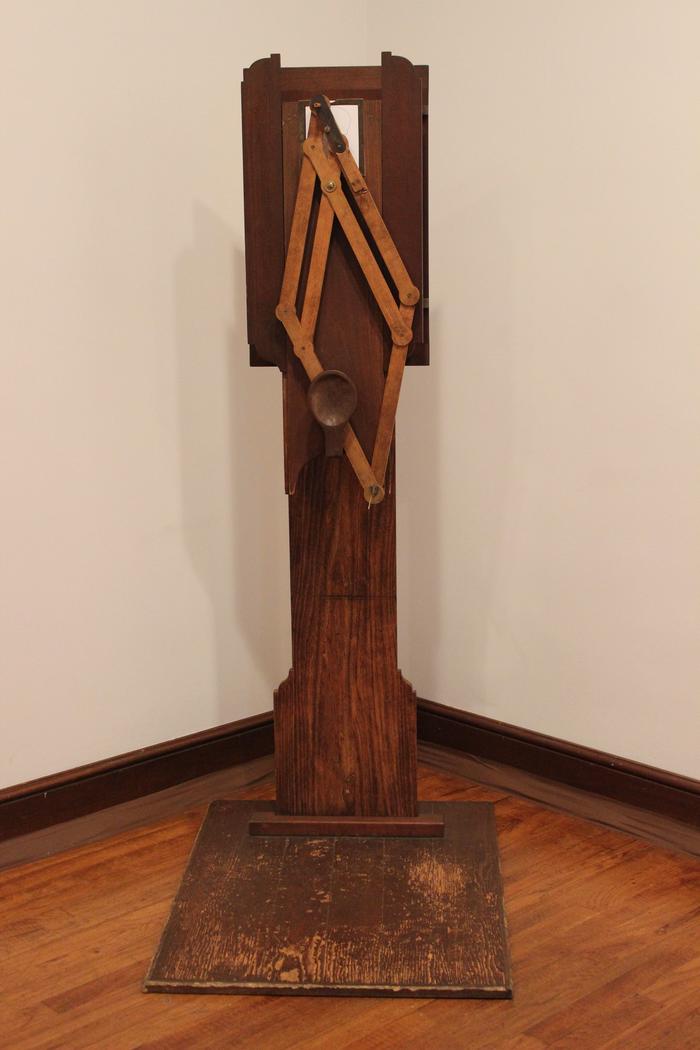L201609_001
J.I. Hawkins' Physiognotrace, replica
circa 1970 (Date created)
1802 (Earliest date)
1802 (Earliest date)
Assemblages
The physiognotrace featured a brass bar connected to a pantograph that physically moved along the actual boundaries of the face. This differed from the first physiognotrace invented by Gilles-Louis Chrétien (1754-1811), which traced the outline of the profile viewed via an eyepiece. Though Hawkins’ machine could be operated by the sitter, using the machine took practice and skill. Cutters were typically employed to produce the desired result. As the face was traced, the attached pantograph guided a steel point that incised a folded sheet of white paper. The physiognotrace proportionally scaled the face of the sitter to fit on a small sheet of paper. The silhouette was cut from these markings, the interior shape was discarded, and the exterior outline placed against a black or dark background. A single sitting produced four identical portraits.
Loan
Please note that cataloging is ongoing and that some information may not be complete.
